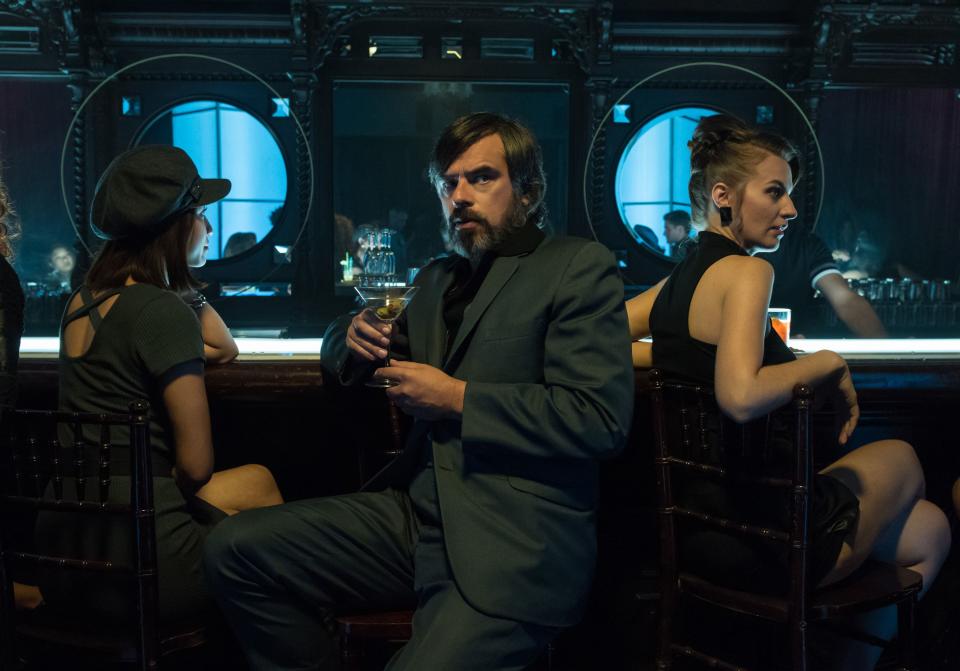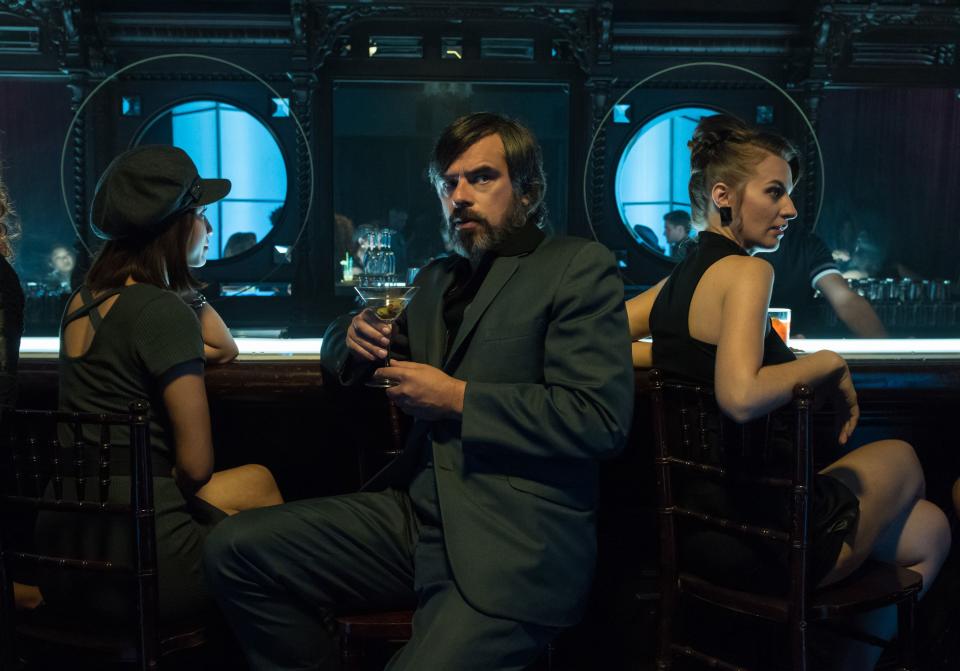Dance, Magic, Dance: How Legion Makes the Most of Its Mutant Movements
“There is a maze in the desert – a vast labyrinth of pathways and corridors a hundred miles long, a thousand miles wide, full of twists and dead ends.”
“At the end of this maze is a prize to be discovered. All you have to do is find your way through.”
When you look closely, you can find quite a bit in common between the Jim Henson classic Labyrinth and Noah Hawley’s kaleidoscopic, dreamlike superhero show Legion (which premiered its second season last night on FX). There are mazes, both literal and metaphorical; both see a young hero battle an otherworldly King (whether Goblin or Shadow); and dance plays a surprising factor in both.
As TV Editor Allison Shoemaker noted in her season two preview, the show “teaches you how to watch it from the moment it begins.” The show speaks to its audience with an entirely different vocabulary than most TV dares to implement, leaning hard into retrofuturist production design, Expressionist lighting, editing techniques, and a, shall we say, loose relationship with narrative continuity.
Dance is just one of such tools in Hawley’s toolkit, but maybe the show’s most important and unexpected. As season two kicks off with a whopper of a dance sequence (more on that later), it’s worth it to examine just how the show uses dance and movement to facilitate its many formal ambitions.
THAT BOLLYWOOD DANCE SEQUENCE
While Legion consistently plays with the blurring lines between dreams and reality, “Chapter 1” eases the audience into the show’s theatrical flirtations with David’s (Dan Stevens) first dream, escaping from the mental facility he’d been locked in for schizophrenia. With the light of his childhood star-pattern lamp cascading over his face as he sleeps, Hawley sends us into his head, with the pop-tinged strains of Serge Gainsbourg and Jane Birkin’s “Pauvre Lola” playing as he envisions a choreographed, Bollywood-style dance sequence with Syd (Rachel Keller), the girl he fell for while interred.
Legion’s aesthetic quirks disarm as much as they disorient, and this sequence is Exhibit A for the way the show’s tendency to use dance as a tonal curveball gleefully thrown at the audience. Season 1 choreographers Geneen Georgiev and Vanessa Young don’t test Stevens and Keller much with the intricacy of their dance moves, but that’s not the point. It’s a joyful expression of love and a reminder of David’s giddy schizophrenia, Stevens’ and Keller’s goofy grins and hip-swaying intercut with screeching flashes of the real Syd trying to break through the illusion. David’s looser understanding of time and the world around him drives a lot of Legion’s narrative, with these moments of free-wheeling dance further evidence of his fractured mind.
A DANGEROUS DUET
Of course, Legion doesn’t always use dance as a substitute for amore or schizophrenic mania – it’s also a creative way to visualize the kinds of external conflict we tend to demand in our superhero media. “Chapter 4” makes clear Hawley’s determination to use dance as a substitute (or supplement) for comic-book action through the Cary (Bill Irwin) and Kerry Loudermilk (Amber Midthunder), two mutants who share a body and all its accompanying feelings.
Cary’s the scientist, and Kerry’s the fighter, but both feel the same things; when Kerry gets into a martial-arts dustup with the jack-booted thugs of Division III, her roundhouse kicks and spins translate into Cary swirling elegantly around his lab with a broom. An experienced clown and comedian, Irwin has a dancer’s grace, a vaudevillian animation that elevates what could be rote superhero action into something beautiful and elegant.
Of course, not every dance in Legion is so meticulously rehearsed. In that very same sequence, Oliver Bird (Jemaine Clement) flails and sways in his ice prison to Feist’s “Undiscovered First” with all the undulating energy of a man getting riddled with bullets. Intercutting between Bird and both Loudermilks as they all dance in their own unique ways, Legion manages to pack oodles of visual splendor and thematic weight into what, in a lesser show, would just focus on Kerry’s Black Widow-esque butt-kicking. The introduction of dance, then, elevates this external conflict into theatrical art.
LENNY’S VAMP THROUGH DAVID’S MIND
Legion’s treatment of dance feels part and parcel of the show’s commitment to externalizing characters’ internal desires on the screen, and never is that clearer that Aubrey Plaza’s brassy, bravura dance number in “Chapter 6” as the Shadow King takes up cozy residence in David’s mind. Assured of her dominance over his consciousness, the opening strains of Nina Simone’s “Feeling Good” wash over Plaza’s face as she confidently struts through the recesses of David’s brain like she’s Tom Cruise in Risky Business.
There’s a breathless anarchy to the way she rummages through David’s world, thrusting against surgical tables and huffing oxygen. With her ribbed turtleneck bodysuit and garter-belted fishnets, she vamps through David’s memories like a silhouetted Bond girl in one of Maurice Binder’s iconic opening title sequences, carrying a leggy fearlessness that Fosse would have been proud of.
THAT DANCE FIGHT
It’s clear that this tradition of dance will continue in season 2, as “Chapter 9”’s ambitious dance sequence can attest. Fists aren’t flown, no one fires psychic beams at each other. Instead, David/Oliver/The Shadow King engage in an impromptu dance battle, complete with mind-controlled dance crews. Popping and locking (choreographed by Richard and Anthony Talauega) become weapons in their battle of wills, fighting off The Shadow King’s advances and succumbing to him in equal measure. (Irwin even gets in on the fun, Cary’s body compelled to dance around the lab in a manner similar to “Chapter 4″’s dance-fight.)
Legion is superhero story as performance art, using dance as a natural extension of the show’s inherent theatricality and presentationalism. By translating David’s psychosis, the Loudermilk’s symbiosis, and The Shadow King’s insidious osmosis into omvement, Hawley found a novel way to extend the psychological and interpersonal conflicts of the show’s characters into the look of the show itself. As season 2 continues down this unconventional path, we can’t help but wonder where, and how, its characters will move.
__________________________________________________________
Subscribe to TV Party, Consequence of Sound‘s weekly TV podcast that’s hosted by TV Editor Allison Shoemaker and Senior Writer Clint Worthington. Guests, games, gets, and gluttonous rankings, all for your TV-loving ears.


